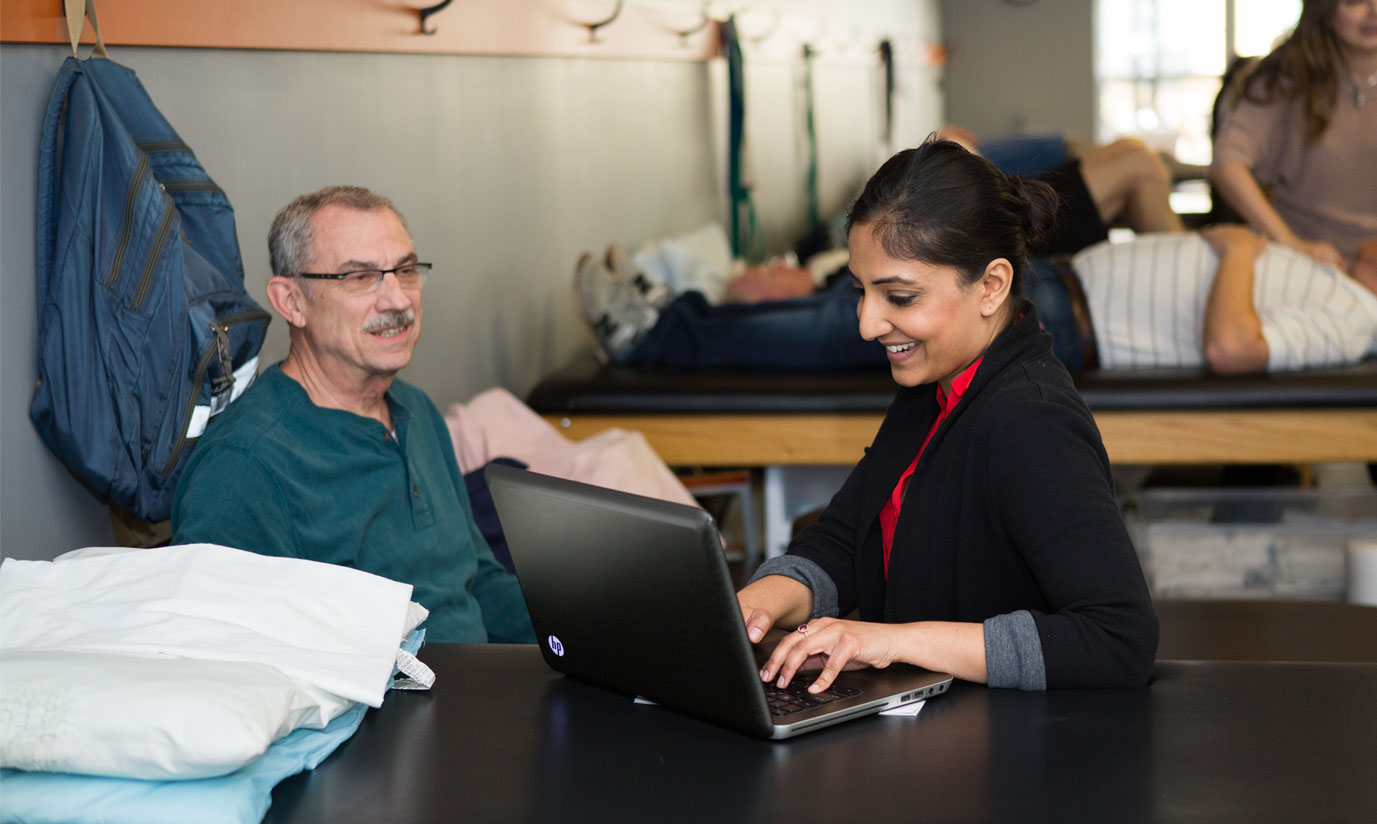
New Directions and Considerations in Neurorehabilitation
- Registration Closed
Already registered?
Log in now.
This Learning Path is designed to incorporate evidence based practice and utilization of new directions and concepts for the management of people with neurological disorders.
COURSE OBJECTIVES
- Critically evaluate primary sources of evidence on functional outcomes and assessments for patients with neurological disorders and integrate the results into case-based clinical decision-making.
- Demonstrate understanding of information test properties as they relate to outcome measures used with individuals with neurological impairment and in research reports.
- Critically evaluate systematic reviews and meta-analyses as sources of clinical evidence on therapeutic interventions for persons with neurological health conditions; demonstrate integration of information obtained from intervention studies to the management of the individual patients.
- Describe theories of neuro-plasticity following lesions to the nervous system and discuss implications for therapeutic interventions for patients with neurological health conditions
- Describe current models/theories of normal and neuro-pathological balance and gait function; discuss the implications of this information for the evaluation of and interventions for gait impairments and functional limitations for patients with neurological health conditions.
- Describe the emerging role of technology neurorehabilitation.
- Understand the interaction of cognition as it relates to mobility and discuss how this interaction may impact physical therapy care.
Laurie King
PT, PhD
Course Instructions
- Click on the Contents tab to view the course materials.
- Click the Take Quiz button to complete the assessment. Learners will have 3 attempts to pass and must answer at least 70% of questions correctly.
- Click Fill Out Survey under the Evaluation listing to provide valuable course feedback. Scroll down on all questions as there may be answer options that expand past the size of the window.
- Click the View/Print Your Certificate button under the Certificate listing. You can view/print your certificate at any time by visiting the APTA Learning Center and clicking the CEU Certificate/Transcript link on the left-hand side of the page.
Need Assistance?
For assistance logging in, accessing activities, claiming credit, or for other questions or concerns, please e-mail learningcenter@apta.org.
Key:
Module 1
Begin self-paced component package.
Begin self-paced component package.
This is Module 1 of a 7-module Learning Path. This course is designed to incorporate evidence based practice and utilization of new directions and concepts for the management of people with neurological disorders.
Learning Objectives: Review levels of evidence, types of studies; Be able to critically evaluate a summary of findings, based on the evidence; Be familiar with common pitfalls in rehabilitation literature; Be comfortable with the translation of reported findings into clinical practice
Module 2
Begin self-paced component package.
Begin self-paced component package.
This is Module 2 of a 7-module Learning Path. This course is designed to incorporate evidence based practice and utilization of new directions and concepts for the management of people with neurological disorders.
Learning Objectives: Understand a systems approach to balance control; Introduce you to the BESTest as a clinical tool to measures balance sub systems; Understand that different subsystems can be impaired depending on disease process; Consider rehabilitation
Module 3
Begin self-paced component package.
Begin self-paced component package.
This is Module 3 of a 7-module Learning Path. This course is designed to incorporate evidence based practice and utilization of new directions and concepts for the management of people with neurological disorders.
Learning Objectives: Understand gait as potential vital sign of health; Review levels of locomotor control; Cognitive control of gait, new findings; Be knowledgeable about types of gait: analysis Clinical and instrumented, Steady state versus postural transitions, What is the evidence for rehabilitation?
Module 4
Begin self-paced component package.
Begin self-paced component package.
This is Module 4 of a 7-module Learning Path. This course is designed to incorporate evidence based practice and utilization of new directions and concepts for the management of people with neurological disorders.
Topics Presented: Evidence for Experience Dependent Neuroplasticity in elderly and neurologic patients; BDNF and role in Neuroplasticity; Neurorehabilitation is not just Exercise - Principles of Rehabilitation Neuroplasticity
Module 5
Begin self-paced component package.
Begin self-paced component package.
This is module 5 of a 7-module Learning Path. This course is designed to incorporate evidence based practice and utilization of new directions and concepts for the management of people with neurological disorders.
Learning Objectives: Understand the link between cognition and mobility; Review the evidence for the effects of training; Implications for rehabilitation
Module 6
Begin self-paced component package.
Begin self-paced component package.
This is Module 6 of a 7-module Learning Path. This course is designed to incorporate evidence based practice and utilization of new directions and concepts for the management of people with neurological disorders.
Topics discussed: Historical perspective on exercise for PD; What goes wrong in balance for people with PD; using systems approach; Review how could exercise help PD
Module 7
Begin self-paced component package.
Begin self-paced component package.
This is Module 7 - the final module for this Learning Path. This course is designed to incorporate evidence based practice and utilization of new directions and concepts for the management of people with neurological disorders.
Learning Objectives: Understand the need for using technology to identify more subtle deficits in neurologic populations; Understand the difference between activity and movement monitors; Understand how inertial sensors may be used to identify important subsystems of balance and gait control; Understand how inertial sensors could be used for long periods of monitoring in a home environment; Understand new biofeedback technologies


